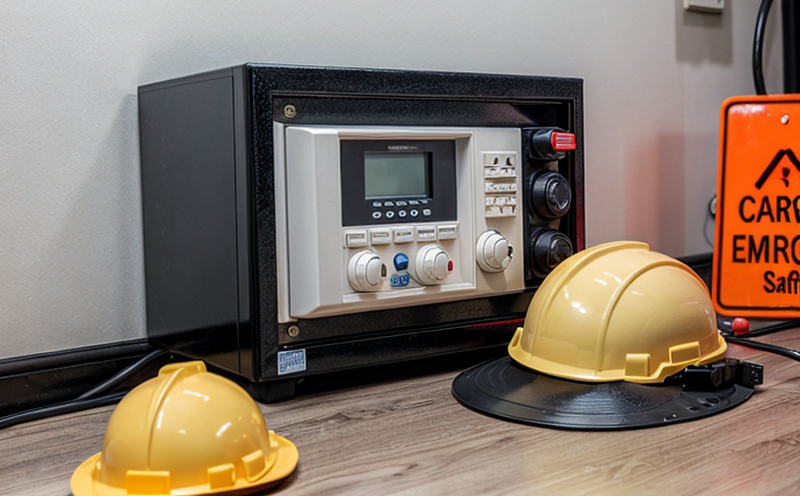EASA CS-23 Survival Equipment Compliance Testing
The European Union Aviation Safety Agency (EASA) CS-23 regulations are a set of comprehensive safety requirements that apply to all types of civil aircraft. One critical aspect of these regulations is the compliance testing for survival equipment, specifically as outlined in CS-23 Part 865. This service focuses on ensuring that all life-saving and emergency equipment aboard aircraft meet the stringent standards set by EASA.
Survival equipment tested under CS-23 includes but is not limited to life rafts, immersion suits, survival kits, and emergency locator transmitters (ELTs). The tests are conducted in a controlled environment where every aspect of these items must pass rigorous checks to ensure they function as intended under the most challenging conditions. This service ensures that manufacturers comply with all relevant EASA CS-23 Part 865 requirements.
The testing process involves several stages, starting from initial inspection and quality control measures to final certification. Each piece of equipment undergoes a series of tests designed to replicate real-world scenarios where these items are expected to perform flawlessly. These include:
- Water resistance and buoyancy
- Inflatability and inflation time
- Material durability and strength under stress
- Durability in extreme environmental conditions (cold, heat)
The testing apparatus used is state-of-the-art, replicating the exact conditions that a survival item may encounter during an emergency situation. This includes specialized tanks for water resistance tests, climate chambers for temperature and humidity exposure, and precise timers to measure inflation times.
Our facility provides detailed reports on each test conducted, highlighting any non-compliance issues along with recommendations for corrective actions. These reports are crucial not only for compliance but also for continuous improvement in the design and manufacture of survival equipment.
Applied Standards
The testing procedures for EASA CS-23 Survival Equipment Compliance Testing are based on international standards such as ISO 12487, IEC 60950, and specific aviation industry guidelines. These standards ensure that the tests conducted are consistent with global best practices in safety and reliability.
Specifically for survival equipment:
- ISO 12487: This standard pertains to the design, construction, and performance of life rafts. It ensures that all aspects from material selection to deployment are rigorously evaluated.
- IEC 60950: This deals with the safety of electrical equipment in regard to survival kits which may include electronic components like ELTs.
- EASA CS-23 Part 865: Directly governs the testing and certification process for survival equipment on aircraft.
Our laboratory adheres strictly to these standards, ensuring that every test conducted aligns with the latest regulatory requirements. This commitment to adherence ensures high levels of safety and reliability in all tested items.
Benefits
The benefits of undergoing EASA CS-23 Survival Equipment Compliance Testing are manifold:
- Enhanced Safety: Ensures that life-saving equipment is reliable under the harshest conditions, thereby protecting passengers and crew.
- Compliance Assurance: Helps manufacturers comply with stringent EASA regulations, reducing the risk of non-compliance penalties.
- Market Access: Certification from our laboratory provides a competitive edge in the global aviation market by demonstrating adherence to international standards.
- Risk Mitigation: Identifies potential issues before they become critical problems, saving time and resources on rework or redesign.
- Customer Trust: Provides peace of mind for airlines and manufacturers that their equipment meets the highest safety standards.
- Continuous Improvement: Detailed reports provide insights into strengths and weaknesses, facilitating ongoing product improvements.
The certification also enhances brand reputation by showcasing a commitment to passenger safety and compliance with international regulations. This is crucial for maintaining a competitive edge in a highly regulated industry like aviation.
Use Cases and Application Examples
| Equipment Type | Description of Test | Outcome |
|---|---|---|
| Life Raft | Inflation test in a controlled water tank, followed by buoyancy and material strength tests. | Pass/fail criteria based on ISO 12487. Ensures the raft can be deployed quickly and safely, withstanding extreme conditions. |
| Immersion Suit | Water resistance test in a specialized tank simulating oceanic temperatures and pressures. | Evaluates material integrity under stress to ensure it provides adequate protection against hypothermia. |
| Survival Kit | Inspection for electrical components, followed by environmental exposure tests in a climate chamber. | Detects potential failures in electronics and ensures the kit can be used effectively under adverse conditions. |
| ELT | In-flight testing to ensure signal transmission meets IEC 60950 requirements. | Verifies that the ELT functions correctly, providing critical information for rescue operations during emergencies. |
The data collected from these tests are used to evaluate each item's performance and reliability. This ensures that all survival equipment meets not only EASA CS-23 Part 865 requirements but also international standards like ISO and IEC, thereby enhancing overall safety in the aviation industry.





